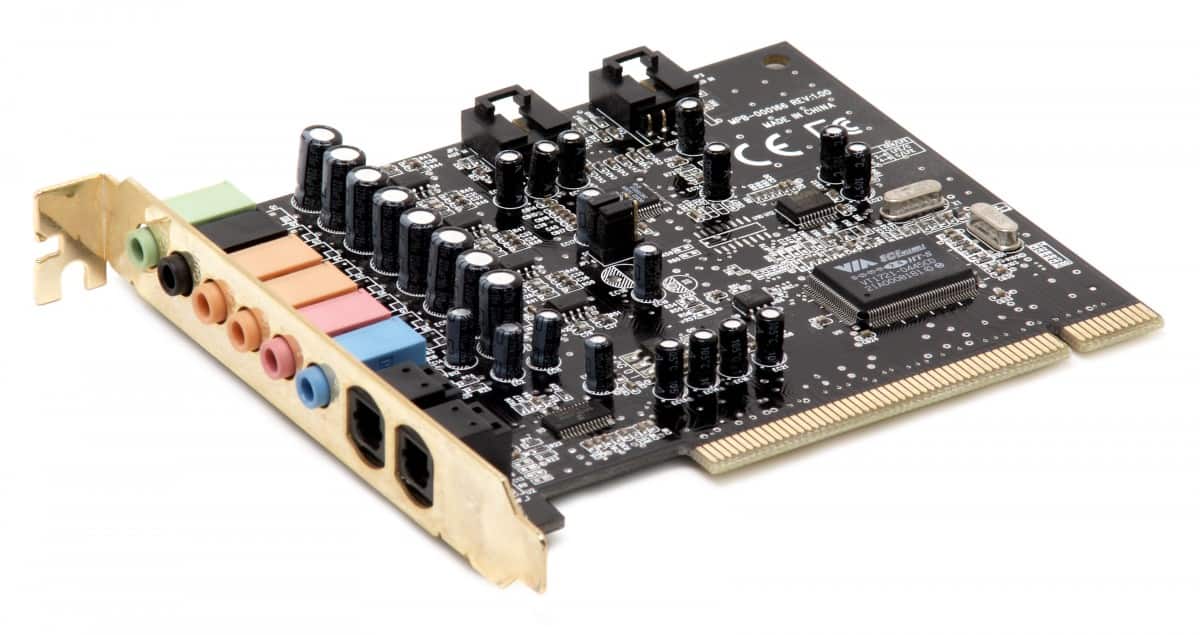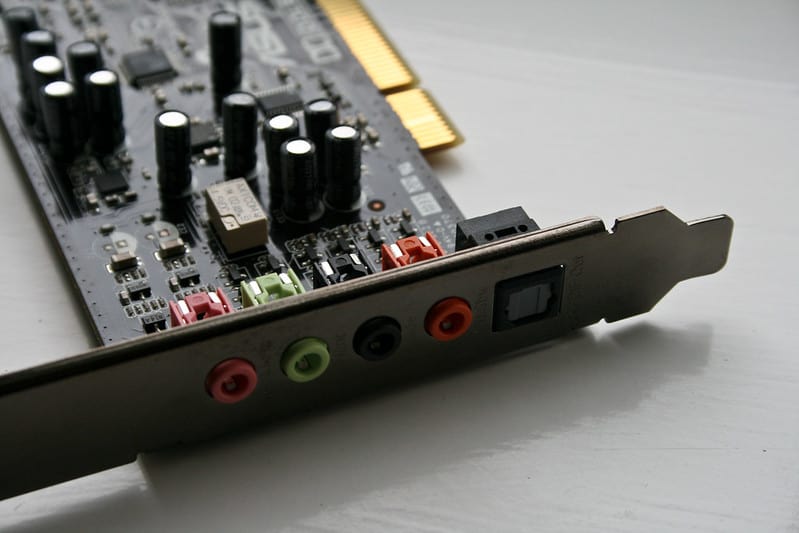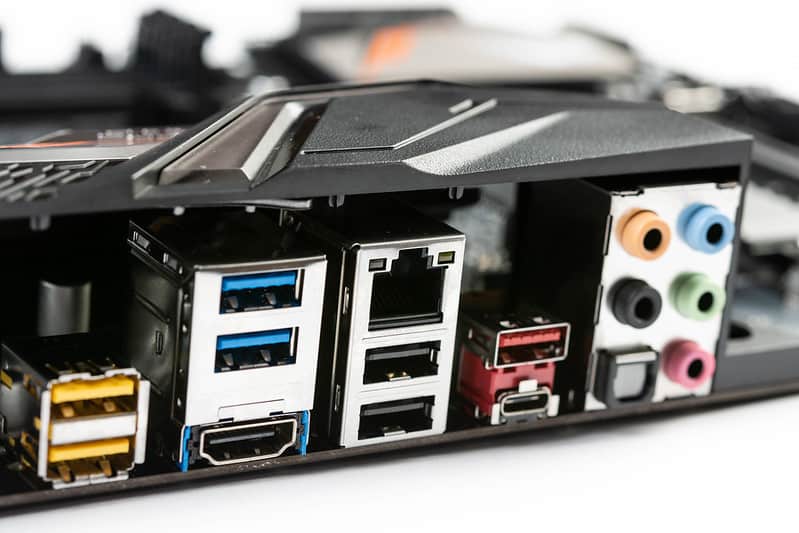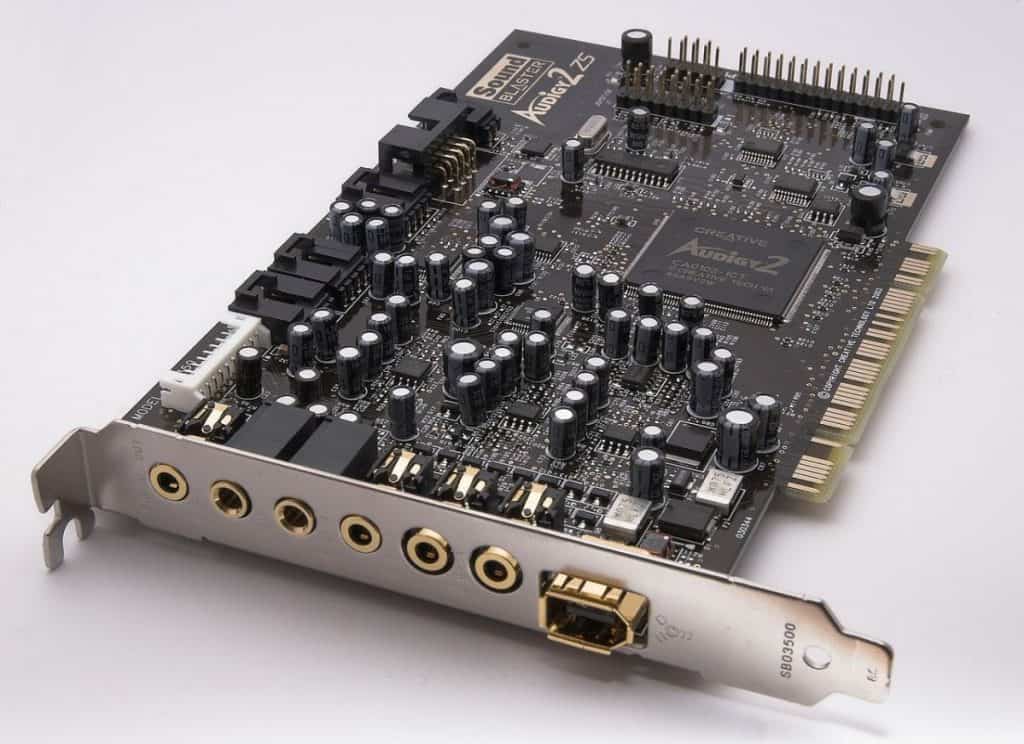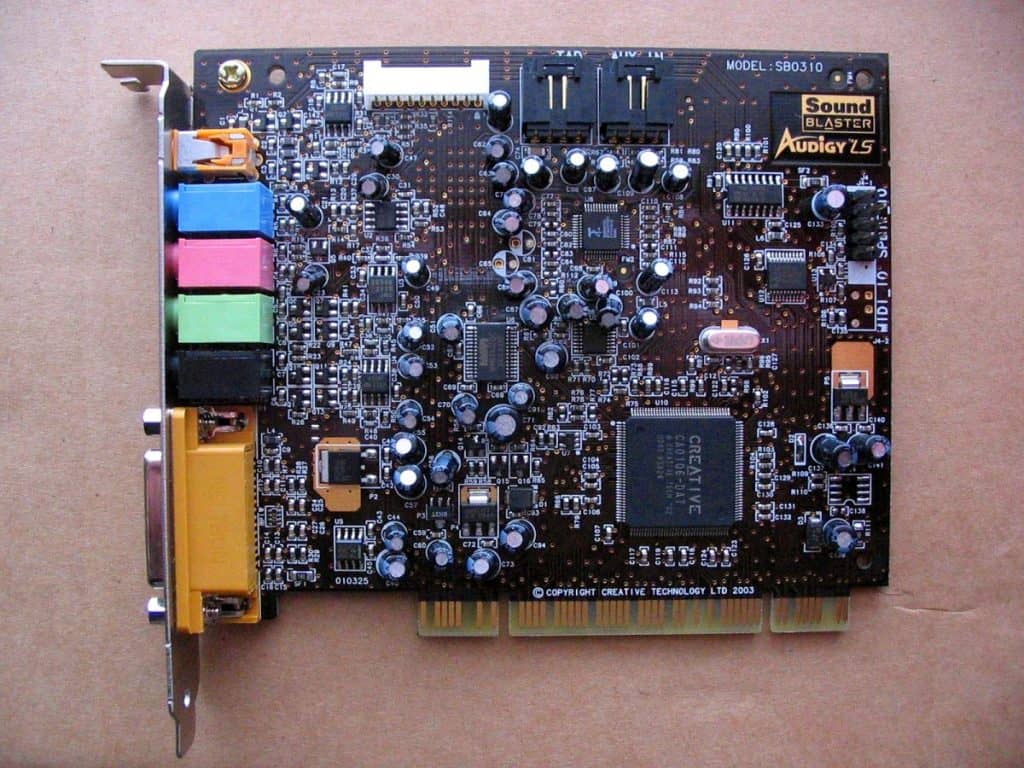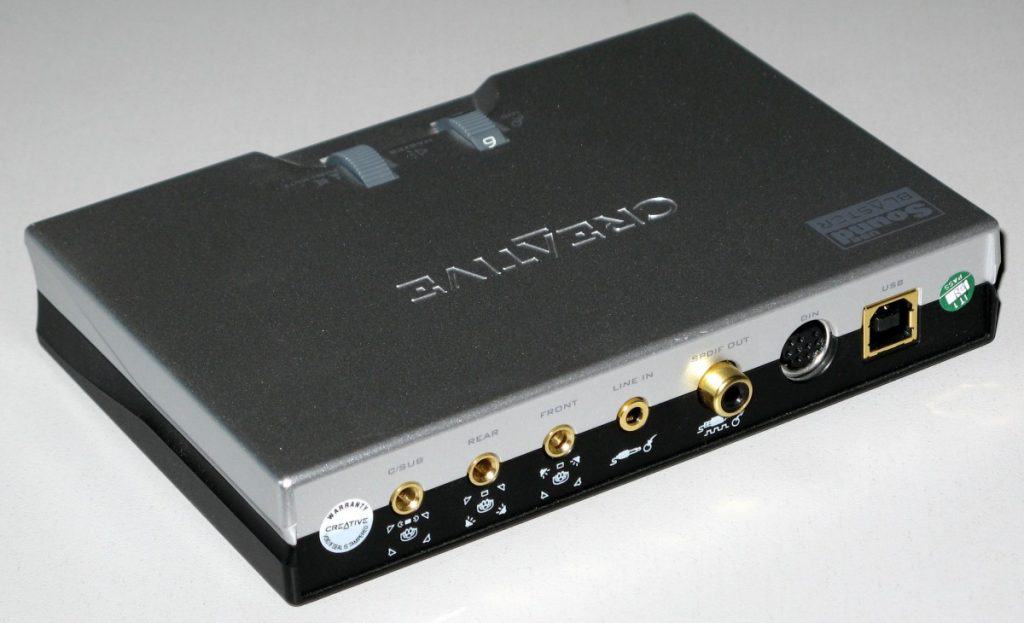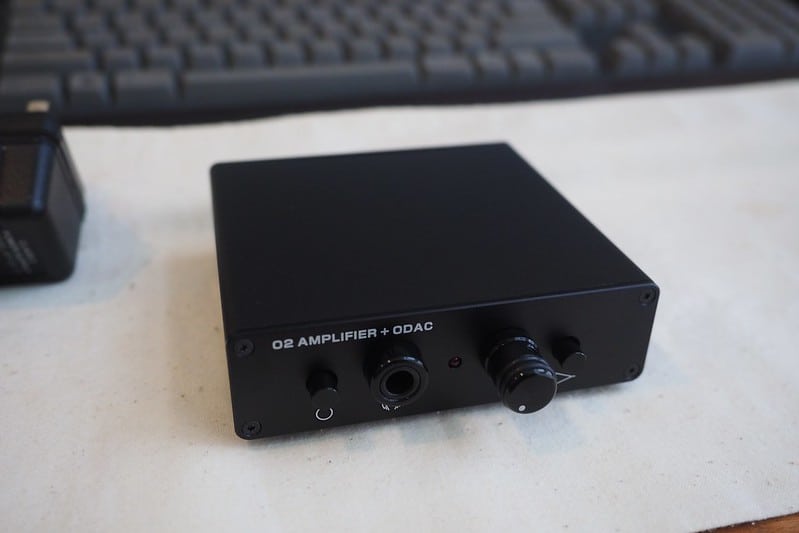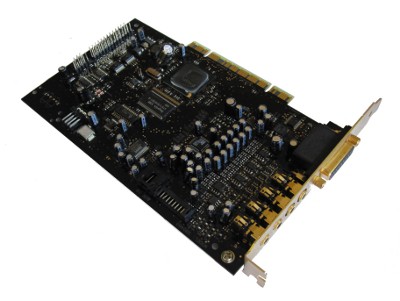Just got a pair of fancy new headphones or speakers, and wondering if a soundcard will help boosts the audio quality? In this post, I outline how a soundcard can help you, who needs one, as well as the advantages and disadvantages of one!
Do You Need A Soundcard? (Summary)
The majority of us don’t need a soundcard. This is because motherboards already have decent soundcards in them, which is good enough for daily tasks. However, if you have a high-end audio device, a soundcard will certainly improve your audio quality and will do a better job of powering your audio devices.
What Is A Soundcard, And What Does It Do?
A soundcard was previously needed to help isolate the audio processing from electrical interference within your PC. Nowadays, however, the integrated soundcards within modern motherboards are good enough to help isolate the hissing sounds and interference within your PC. (But there will still be electrical interference, hence it’s best to place your audio processing outside your PC, more on this later into the blog post)
But, that’s not to say that soundcards are completely useless.
One of the benefits of having a soundcard is that it gives you more ports for audio connectivity. As soundcards are dedicated for audio purposes, they come with a variety of audio ports, some of which, aren’t on your motherboard’s back panel. Hence, if you have a 5.1, or 7.1 system (5.1 refers to 5 speakers, 1 subwoofer, 7.1 refers to 7 speakers 1 subwoofer. These are two common configurations for surround sound. For more on 5.1, 7.1, and surround sound in general, I recommend you check out this Wikipedia article here.), and if your motherboard doesn’t have the available connections, this will be a good reason to pick up a soundcard.
Personally, I use a 5.1 system and my motherboard has all the connections needed, so I highly advise you to inspect your motherboard before picking up a soundcard for this purpose.
Another benefit of having a soundcard is that it can directly tune and configure your audio. The majority of soundcards available today have dedicated software, meant for finer tuning, and also for obtaining surround sound. Unfortunately, this might also mean a longer set up time and having to download more drivers. Several motherboard manufacturers have also taken notice, hence, some motherboards also come with dedicated audio controls in their software.
In general, you will be able to get better audio quality when using a soundcard, however, that depends on your audio device (speakers/headphones), as well as what you’re using it for, whether that is gaming, listening to music, or watching movies.
Soundcards also provide a more powerful amplification for your audio devices. If you’re utilizing mid to low-tier audio devices, soundcards won’t be of much use, but you might want to consider using a soundcard if you utilize high-quality headphones or speakers. (But, you might also want to consider using a DAC if you have high-end audio devices, a full explanation can be found below!)
How Does A Soundcard Work?
The audio formats on your PC, such as mp3 files you have, consists of digital data (zeroes and ones). However, we are unable to hear the digital data, and hence, need something to convert that data to sound waves.

That’s when a DAC (Digital-to-analog converter) comes into play. A DAC essentially converts the digital data (zeroes and ones) into audible sound waves. A soundcard consists of the following components:
- A DAC (digital-to-analog converter) – For converting sound from digital data to sound waves for you to be able to listen to them
- An ADC (analog-to-digital converter) – For you to use microphones and other audio recording devices, to then convert it to a digital format. (basically the opposite of a DAC)
- An interface such as a PCI interface for connection to the motherboard. (Only for internal soundcards, Not external soundcards)
- Inputs and outputs – to connect audio devices, such as speakers, headphones, and microphones to the soundcard.
(Source)
So essentially, a soundcard has a chip for digital-to-analog conversion (DAC), analog-to-digital conversion (ADC), and contains additional features that help improve your audio quality.
Just to make it clear, your motherboard also has a soundcard, but, a dedicated soundcard will be much better. (A soundcard is required to convert digital audio to sound waves as mentioned above.)
Another device that has similar features is an external DAC. The reason for bringing an external DAC into the mix, is because external DACs are a great alternative to soundcards which I’ll elaborate on further in the next topic:
Soundcard VS External DAC VS Motherboard Onboard Audio
1) Soundcards
Firstly, soundcards are great for customizing your audio. As mentioned above as one of the benefits of having a soundcard, you can configure your EQ settings, surround sound, and the general audio quality of how your audio sounds.
But, if you purchase an internal soundcard, there might be electrical interference. So, you would be much better off getting an external soundcard. (I have listed below some great external & internal soundcards which I highly suggest you check out!)
Soundcards are a must if your speaker setup requires specific ports that your motherboard doesn’t have.
Furthermore, soundcards can also be used to record or to transmit audio directly, using the aforementioned ADC (analog-to-digital converter). (Some DACs don’t have the inputs to connect microphones directly)
2) External DAC
External DACs are great as an affordable option. They are easy to set up and don’t have any other drivers that you need to install for them to function.
External DACs usually have connections ports such as a 3.5mm headphone jack, speaker connection ports such as a RCA, and line outputs, as well as an input for you to connect it with the device such as USB.
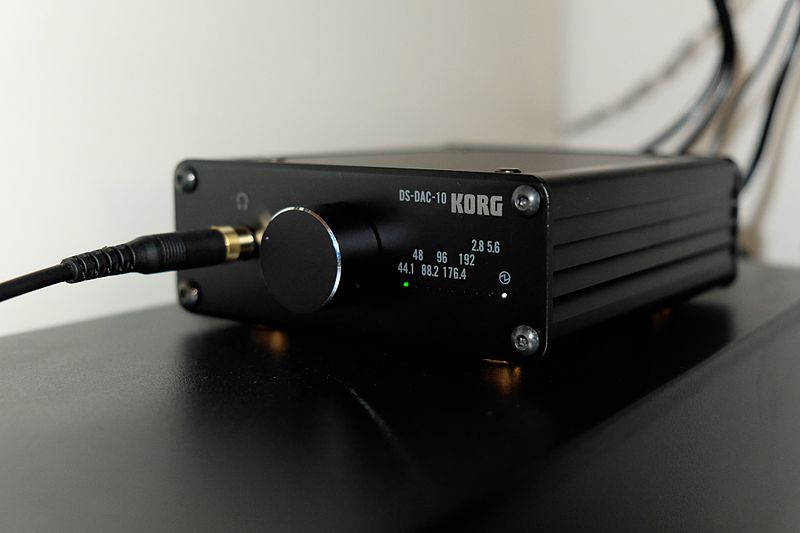
If you have a 5.1 setup or 7.1 setup, this is where you might face some challenges, as the majority of DACs don’t have the ports needed for them.
But if you just have a basic speaker setup that requires RCA outputs, you should be fine, as most DACs have them. (More on that under the external DAC buying guide down below!)
DAC/AMP combos are the most popular, as they are cheaper together, and they allow the manufacturer to make both of them work in conjunction properly.
Nonetheless, you can buy separate DACs and AMPs, or together, but I’ll leave some personal recommendations down below!
3) DAC VS Soundcard – What Are The Differences?
Simply put, the soundcard uses a DAC, and DACs are standalone DACs.
There aren’t many differences between the two. Soundcards used to be an unpopular choice, partly because they were Internal and could cause electrical interference. However, now that External soundcards are available, both DACs and external soundcards seem to be great options for whatever your situation is.
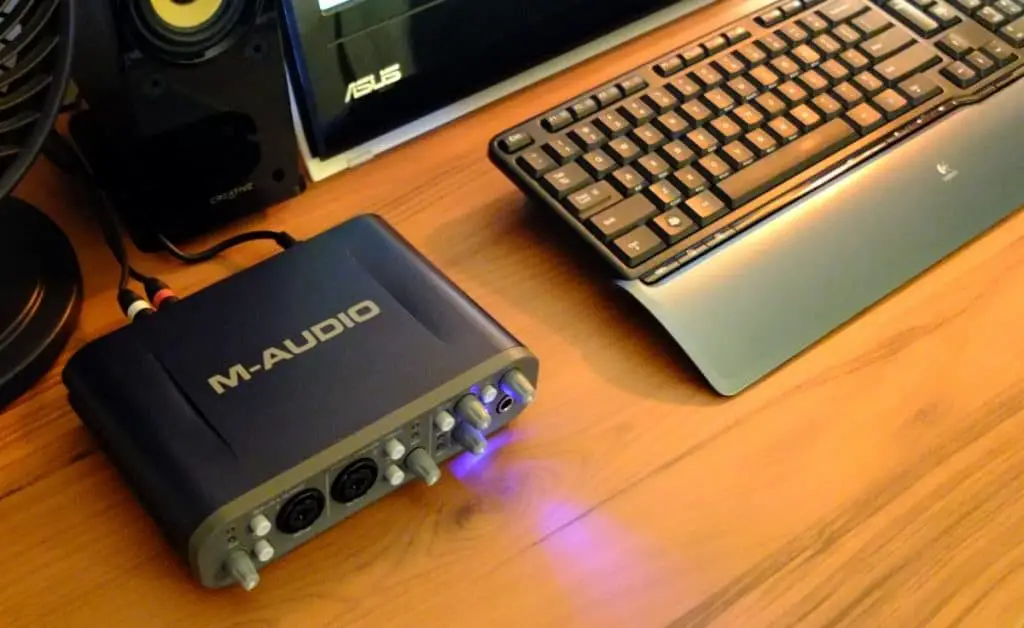
Firstly, DACs don’t have any configuration software to set your EQ settings and so forth. However, DACs are typically cheaper, easier to set-up (no software, no drivers whatsoever), and more portable, which makes them a favorite for many.
On the other hand, soundcards are great for gamers. In fact, gamers are the target demographic. Some soundcards have great virtual 7.1, Dolby Digital, and in general, great audio settings. Soundcards are also a good option if you have a 5.1 or 7.1 speaker setup as they have all the ports needed. So if you’re a gamer, and have an equally capable speaker or headphone to use a soundcard with, but, at the same time, don’t mind the extra price, go for it! Especially since DACs usually don’t have connectivity options for 5.1 and 7.1 surround sound setups.
(But remember to get an external soundcard, not an internal one, as it’ll make the process of installing it 10x easier and you’ll have less electrical interference/hissing sounds)
If you’re someone who has a high-quality pair of headphones or speakers that sound terrible on your device, a DAC or soundcard is equipped to give you better sound quality. But a DAC will be much easier to set up, so I suggest you go with a DAC if you aren’t into gaming and don’t care much about surround sound and audio configuration.
If you can hear any buzzing, crackling, or anything related to electrical interference I recommend you just get a cheap DAC to isolate where your audio is being processed.
Lastly, for those of us that don’t have high-end audio devices, and don’t have any current problems with electrical interference, your onboard motherboard audio already has a soundcard, and is fine for most tasks!
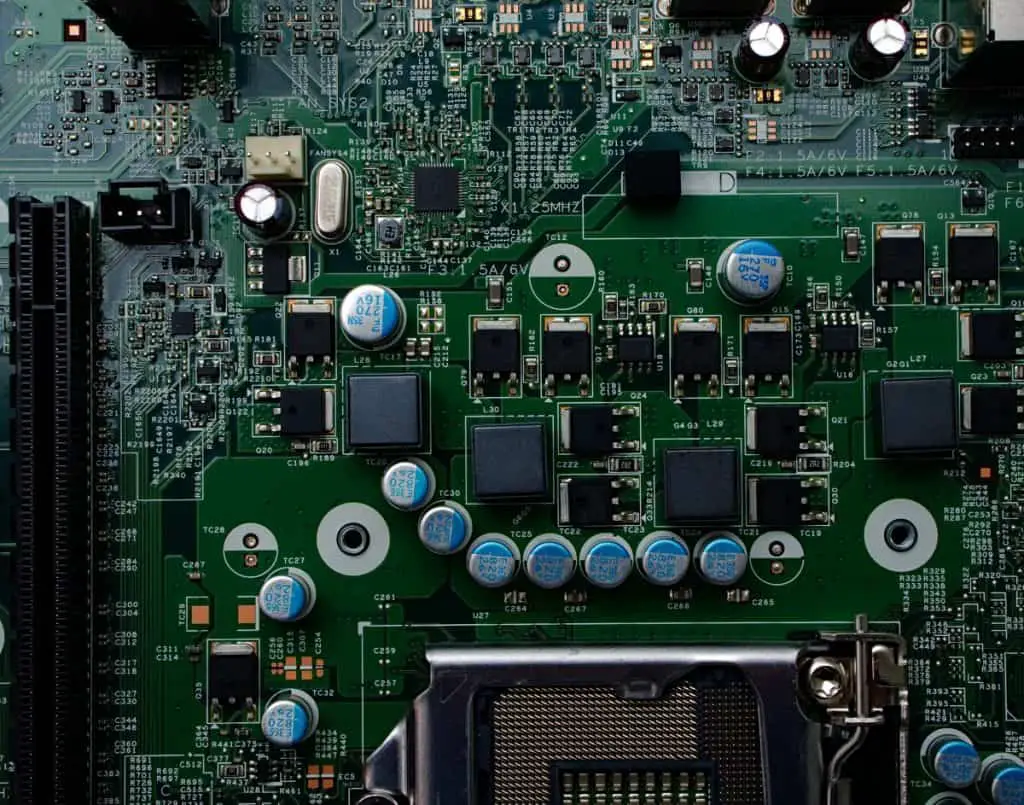
Then again, if you have the top-of-the-line headphones or speakers, not using a DAC or soundcard would be underutilizing them, as your motherboard won’t be capable of fully putting them into use.
As a general rule of thumb, if your headphones have an impedance rating at about 55-75 ohms and above, you might want to consider getting an external DAC or a soundcard, as your motherboard probably won’t be powerful enough to power your audio devices, meaning that they may sound soft, or won’t sound right on different frequencies. (More on impedance & how to check it down below!)
4) Onboard Motherboard Audio
Many recommend that you just go with the onboard audio that you already have on your motherboard, and I do too. All motherboards come with embedded sound cards, as it is required to play audio and to record audio, but have the limitation being that they are in a tight space, and won’t be able to produce higher quality audio, such as the ones in external DACs, or from dedicated soundcards.
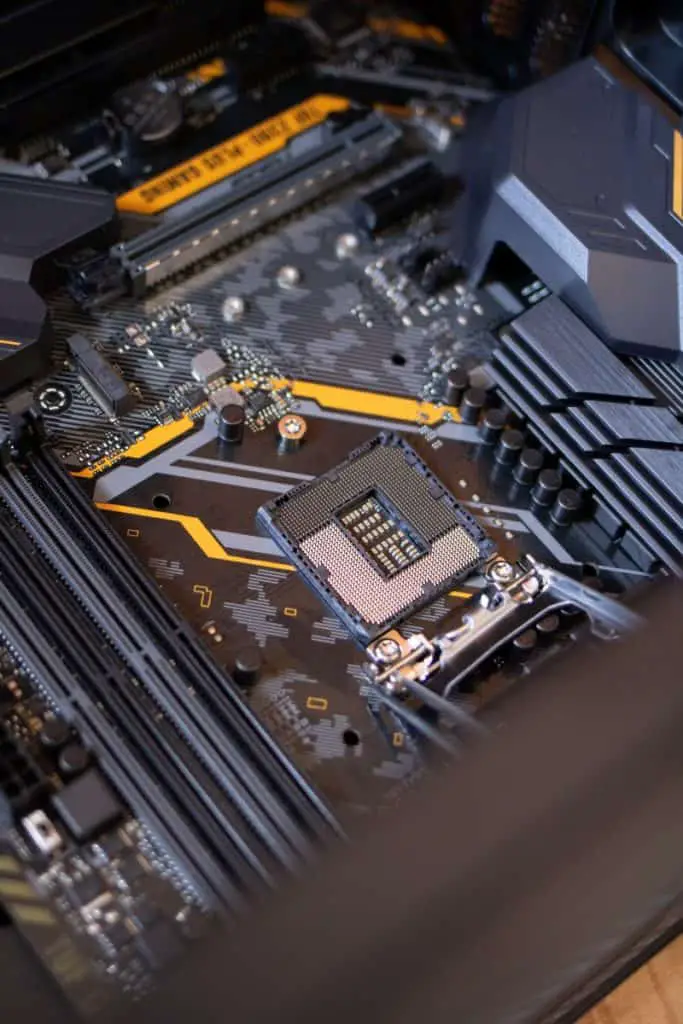
Furthermore, the soundcards within the motherboard also might face electrical interference, as it is within your PC.
That being said, if you don’t hear any hissing or find any interference issues, the onboard motherboard audio on your computer is just fine for gaming, and casual usage.
Especially if your headphones or speakers aren’t capable of bringing you better audio quality, even if you buy an expensive soundcard or DAC, there won’t be a notable difference.
If you have a decent motherboard, you really don’t need to be worried, as the soundcards in those are good enough for most of our tasks.
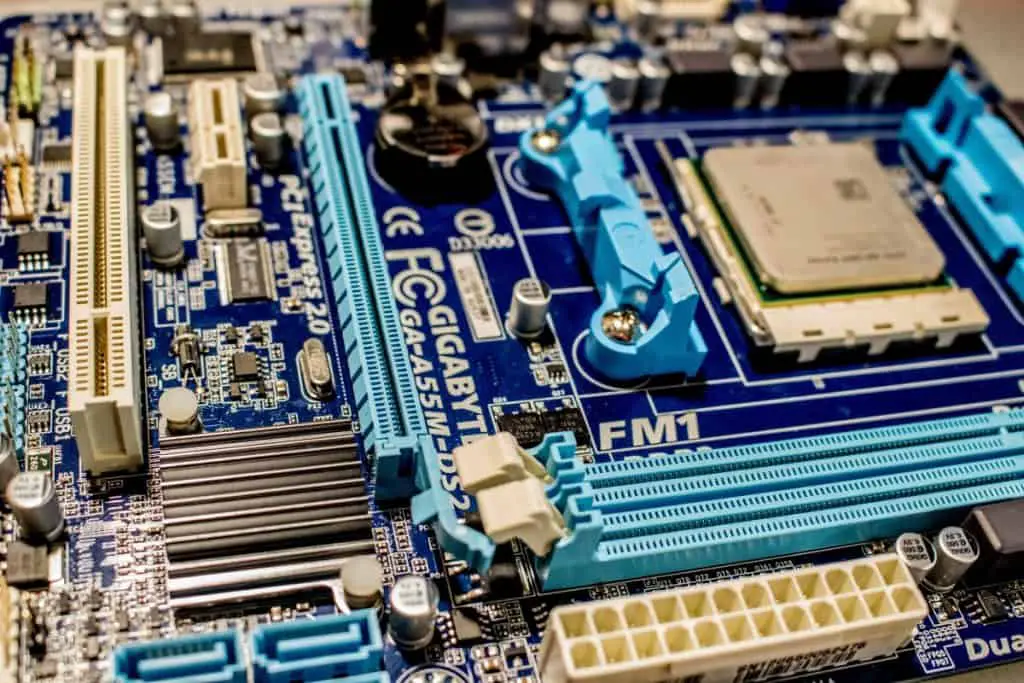
Therefore, I highly recommend you just go with the onboard audio on your motherboard as most of us don’t require more than that, unless you have issues with interference, or require something better to drive your expensive fancy audio devices, or if you produce music, and seek for a better alternative.
Who Are Soundcards For?
Soundcards are for those who:
- Play video games often
- Crave for surround sound or virtual surround sound
- Require additional ports such as for a 5.1 or 7.1 surround sound setup
- Want software to configure the sound settings to their liking
- Has a high-end audio device
Who Are DACs For?
DACs are for those who:
- Just want a simple, and portable quick solution to power their audio device
- Has a high-end audio device
Do I Need A Soundcard For Gaming?
A sound is not needed for gaming, as your motherboard already has a soundcard that is decent enough for gaming. However, a soundcard can be useful if you have high-end audio devices, or if you need extra audio ports such as for a 5.1, or 7.1 surround sound speaker setup.

How To Purchase The Right Soundcard
First and foremost, you’ll need to pick either an internal soundcard or an external soundcard. Internal soundcards require you to mount it within the PCI slot on your motherboard. While external soundcards are typically connected to your PC via USB.
If you have a 7.1 or 5.1 sound system, you should also take into consideration the number/type of ports available on the soundcard.
Some soundcards also have Dolby Digital and special software, so if you’re looking for a specific set of features and sound settings, I highly recommend you take a deep look into each soundcard’s description/specifications.
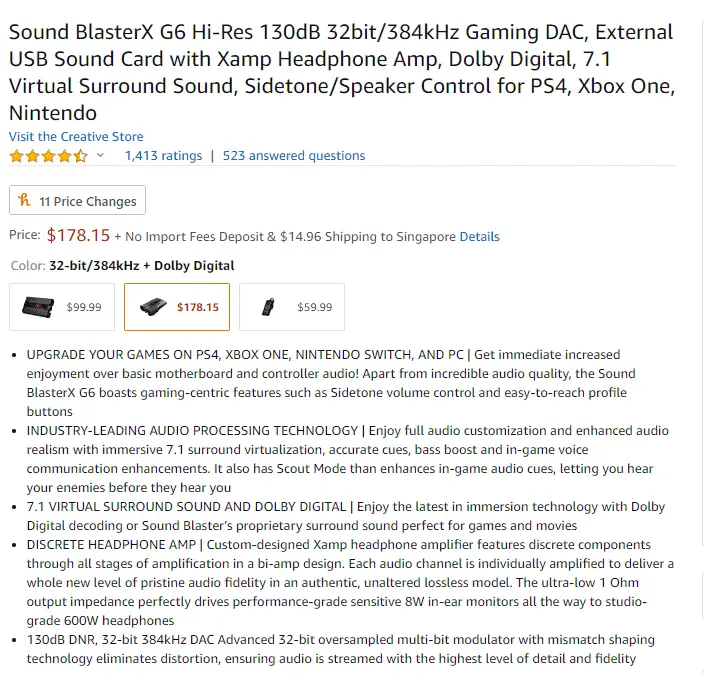
Next, especially for higher-end audio devices, you need to ensure that the soundcard has an impedance rating higher than the one shown on your headphones or speaker’s specification chart.
Take the Sennheiser HD 650 headphones for example, they have an impedance of 300 ohms. And if I were to use it with the Sound BlasterX G6 External soundcard, it would be more than enough, as the soundcard is capable of driving headphones of 600 ohms and as low as 16 ohms.
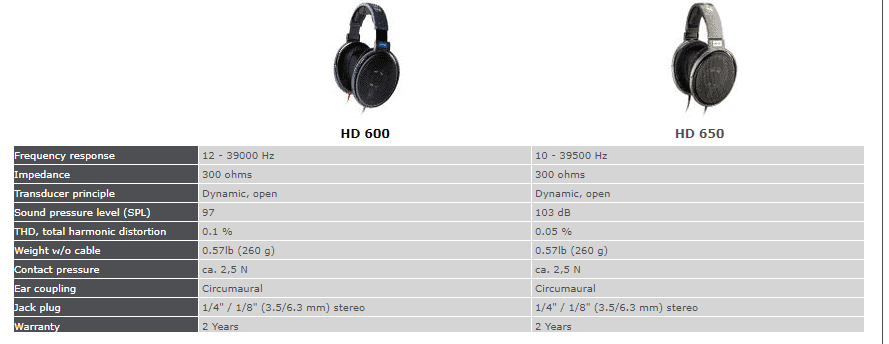
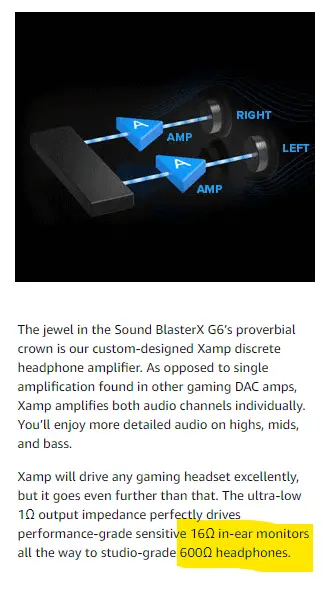
You can find the impedance of your headphone & soundcard in the product description, most are within the technical specifications, or you could do a quick Google search to find it.
If you aren’t using high-end audio devices, you really wouldn’t need a soundcard, but if you want one, then you would most likely be fine going with any soundcard, as low-end to mid-tier audio devices don’t require as much power, and don’t usually have high impedance ratings.
Personal recommendations for a soundcard:
| Type | Name | Best For | Link |
|---|---|---|---|
| External Soundcard | Sound BlasterX G6 | This external soundcard is for those who want the best-of-the-best. It has just about every feature you could want, but does come at a steep price. This soundcard can power up to 600-ohm headphones. | Check Updated Price On Amazon |
| External Soundcard | Creative Sound Blaster | This external soundcard is a great, fairly affordable option. At the same time, it also functions as a microphone. | Check Updated Price On Amazon |
| Internal Soundcard | Creative Sound Blaster Audigy FX | This internal soundcard has ports for 5.1 setups, and an option for 7.1 setups as well, and can power up to 600-ohm headphones while remaining affordable. | Check Updated Price On Amazon |
| Internal Soundcard | Sound Blaster Z | The Sound Blaster Z is perfect if you want to improve your audio quality. It comes with additional software and a microphone. | Check Updated Price On Amazon |
How To Purchase The Right External DAC
There are many variations of DACs on the market. Such as small-sized ones for phones, mid-sized USB DACs for desktops/laptops, portable USB DACs, Wireless DACs, and AMP/DAC combos.
For mobile users, a small-sized USB DAC will be just perfect for you.
While for desktop/laptop users, a USB AMP/DAC, such as the Fiio E10K, will help you get the most out of your headphones/speakers.
However, likewise, with soundcards, you’ll need to ensure that your DAC has the right impedance rating for your audio device.
Taking the Sennheiser HD 650 as an example again, it has an impedance of 300 ohms, while the Fiio E10K has an impedance rating of 150 ohms, this means that the Fiio E10K may not have enough power to power the Sennheiser HD 650s. (However, from the reviews of the Fiio E10K, users who use the HD 650s don’t seem to have any problems when using the Fiio E10K DAC.)
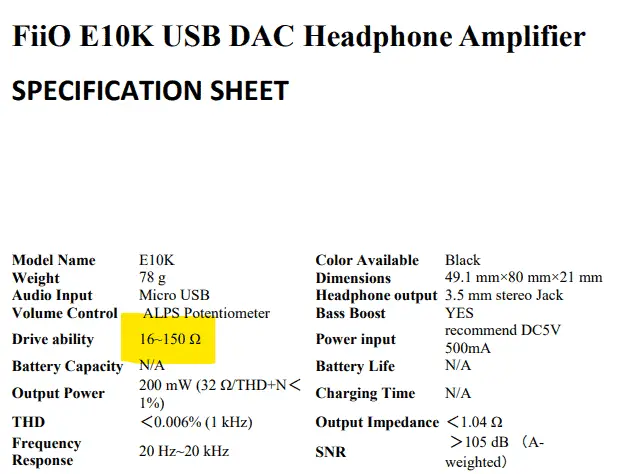
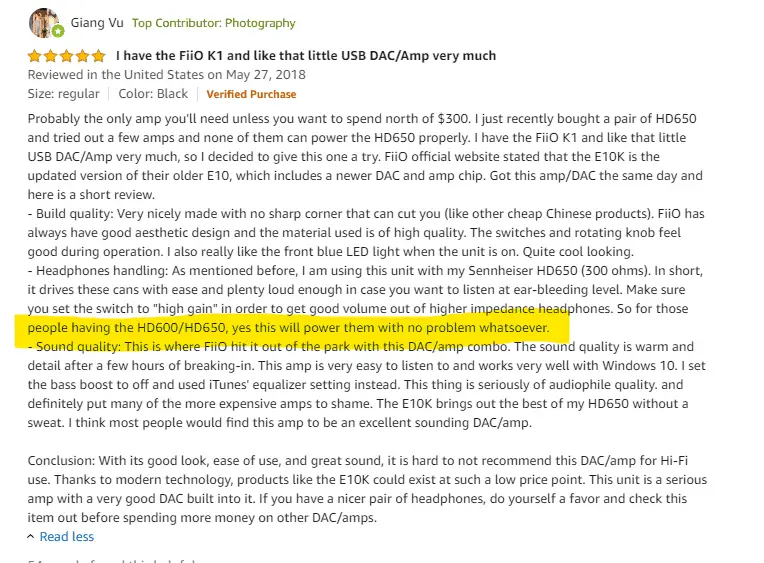
Besides impedance, you should also look at the ports needed for the DAC. Using the Fiio E10K as an example, it has outputs for coaxial, line, and through a 3.5mm headphone jack. The Fiio E10K uses a USB for power as well as an input for audio from your device to the DAC.
As for mobile users, a USB DAC/AMP to a 3.5mm headphone jack will work just fine, especially for portable usage, due to their small form factor. For mobile users, I recommend getting HIDIZS, it’s a small, compact, and affordable AMP/DAC for on-the-go use!
In short, you need to select the right external DAC based on the impedance of your audio device and soundcard, and also the connection ports available on the external DAC itself. For speaker users, you want to make sure that all the ports you require are on the DAC itself.
Personal recommendations for an external DAC:
| Type | Name | Best For | Link |
|---|---|---|---|
| DAC/AMP | FiiO E10K | The Fiio E10k is best for most situations. It has a simple layout, and it is one of the most well-reviewed DAC/AMPS out there, and isn’t too expensive. | Check Updated Price On Amazon |
| DAC/AMP | Audioengine D1 | The Audioengine D1 is best for speaker users, due to the available ports on the DAC/AMP. | Check Updated Price On Amazon |
| Mobile DAC | HIDIZS | This is an affordable, mobile DAC that is compact, useful, and compatible with the vast majority of platforms. | Check Updated Price On Amazon |
| DAC | iFi Zen DAC | The iFi Zen DAC is a standalone DAC, that has easy connectivity to an AMP, and has a multitude of ports for other connections, as well as many good reviews to back it up! | Check Updated Price On Amazon |
Bottom Line
The bottom line is that a soundcard will make not much of a difference for most of us, but if you see it as a worthy investment, by all means, go for it!

